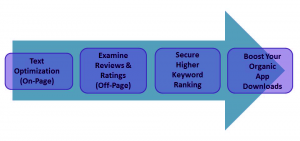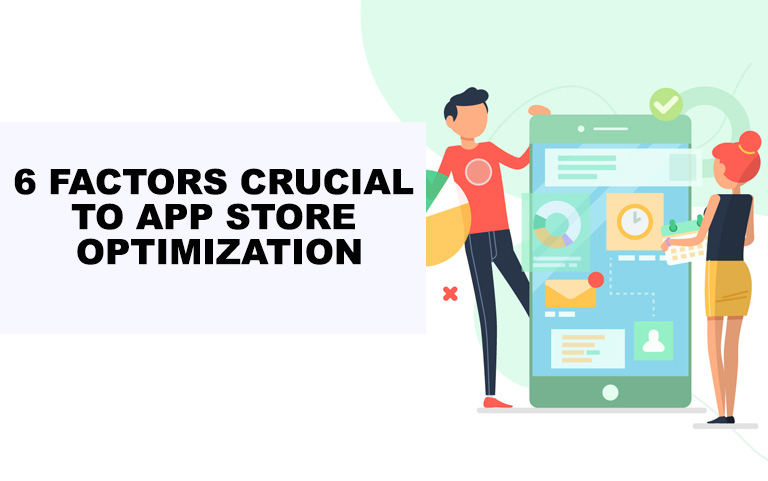Have you recently developed and launched a mobile app? If your answer is yes, then App Store Optimization (a.k.a. ASO) is something that needs to be an integral part of your mobile app marketing strategy. It might very well be the most important thing you do to market your app. Before we get into App Store Optimization, consider the following points:
If you have a mobile phone it’s highly likely you have an app or two installed. In fact, the average mobile phone user in the US uses around 27 apps on their device per month. That’s right, 27. Yup, “per month.”
If you think that number is staggering, think that there are over 5 million mobile apps in both the App Store and Google Play. And if you are a mobile app publisher today – you probably know getting your app discovered is one of the most important issues you need to tackle.
Much like SEO, where many strategies exist for getting your website ranked high in the search engines, App Store Optimization tries to do something similar within the App Stores. You can basically think of it as a form of SEO for mobile.
In both cases, it’s about visibility and getting your website or app in front of as many people as possible. And achieving results means more visitors to your website or more downloads for your app. In fact, over 60% of apps are discovered through app store searches.
In order to see the good results of ASO, you need to invest time and effort and understand the methods and factors crucial to App Store Optimization.
To understand why ASO is important, we need to understand that both Apple and Google take into account various factors when ranking apps. Of the most important include: rating and reviews from your users, the amount of downloads your apps have achieved, how quickly your downloads have occurred, and what keywords are used in the descriptions in your App Store.
All these are important to get you on your way to optimizing for your App Store ranking.

Here are 6 Factors that must not be overlooked and should be implemented to help you get to the top of the App Stores rankings:
1. App Logo – Image is everything. According to Su Mathews Hale, a senior partner at the New York brand-strategy and design firm Lippincott: “a company’s logo is its shorthand, a visual cue that tells a story of the brand’s culture, behavior, and values.” Since there are millions of apps on the App Stores, it’s imperative that your logo is a quality design, is unique and stands out. Your app icon also matters a lot since it’s the first thing a user sees.
2. App Description – Take time and create a compelling description of your app. Make sure you also fill out the app description and the “What’s New” field in your app store product page if possible. Outline or write a bullet list of your app’s significant features to create a persuasive app description and ensure that you’re highlighting how your app is different from all the others. Remember, your app’s description will play an important role in helping users make a decision of whether or not to download your app.
3. Screen Shots – In the same line as your logo, your screenshots and the features you show are important. Screenshots give a visual representation of what your app looks like and can showcase features, functionality and should function the same way as the window display of a store. The first 2 screenshots in your app listing are the most important ones because they are the first a user sees when landing on your App Store. Most importantly, make them attractive and show your apps features and value proposition.
4. Reviews and Ratings – It’s safe to assume that better reviews mean better rankings. Mobile apps with better reviews and higher rating rank better. Period. Therefore, it is important for you to ensure that you have as many positive reviews as possible and that you have addressed negative reviews timely and appropriately. Many companies forget to do this and all it does is perpetuate a negative brand image.
5. Keywords – First, understand the keywords that are ranking well or keywords that you should target for your app. Do research on keywords that are as high in traffic and low in competition as you can find, and put those keywords into your title, keywords (App Store only), app description and short description (Play Store only). Try to include as many search keywords as possible to pull in your target users, but make sure to not keywords stuff these sections and keep it relevant. Use keywords that are associated with the features and pain point your app solves.
6. Quality Analysis– QA can’t be ignored. It’s most fundamental that your app is free of bugs, doesn’t crash and delivers on its promise. Remember, all your efforts and optimization hard work will be to no avail if you have an app that is terrible. Users won’t download it or if they do, it will be deleted shortly after.
In conclusion, if you are not using App Store Optimization tactics to increase your app’s search ranking, you are missing out on the largest discovery channel available to your app. Remember, Creating the perfect environment for app success doesn’t have to come at a huge cost. It takes a good understanding of the app store and consistency in tracking and adjusting your strategies.

